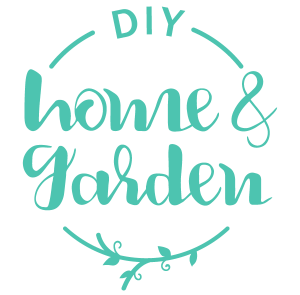Flowers are a beautiful addition to any backyard. They’re colorful and eye-catching and add a sense of serenity to your home. Yet, despite their natural beauty and appeal, many people find it daunting to create a beautiful flower garden.
However, if you have the right tools and know-how, there’s no reason why you can’t turn your backyard into a flower paradise! Here are a few tips for you to get started.
1 – Plan the Flower Garden Layout
A flower garden is an ideal place where you can relax and enjoy your time. It can also be a great way to give back to nature. If you don’t want to go through the seeding process, you can easily order flowers and plant them so they look beautiful from the start.
The most important factor when designing a flower garden is to ensure a good design. You want to ensure that everything fits together well and looks good when completed. You don’t want to waste time or money installing a fence around your flower garden.
2 – Choose a Color Scheme
When designing a flower garden, it’s essential to choose a color scheme that helps your garden come together in a way that looks beautiful and cohesive. You want to ensure it has the right blend of colors and shapes to look like an intentional design rather than an accidental one. Here are some tips for choosing a color scheme:
- Arrange flowers in groups based on their height and shape. If you have taller flowers at one end, you’ll want to use different colors than if they’re shorter.
- If there’s a lot of shade in your yard, consider using darker greens or purples (or both) instead of brighter hues. These will help make your flowers pop when the sun’s rays hit them.
- If trees are in your yard (or nearby), try not to use too many dark colors because they’ll look muddy against the green background. Instead, choose lighter greens, yellows, or oranges.
3 – Planting Plan
A good flower garden design process starts with the selection of plants. The first step in designing a flower garden is to decide on your garden’s overall theme or style. Many different concepts and designs can be used to create a beautiful and unique natural area.
The next step is to check the soil conditions in your flower garden. This will depend on where you live and what kind of maintenance you’ll need throughout the year. If you plan to grow many flowers in your garden, you should choose plants tolerant of different climates and soil types.
Once you’ve selected your plants and have determined which type of soil conditions they’ll be placed in, it’s time for them to be planted! The planting process takes some time because each plant needs to be watered before being put into its designated spot.
4 – Add Complementary Perennials
Designing a flower garden is an art, and its beauty is in its variety. Adding complementary perennials to your design can help you create a beautiful landscape as diverse in color and texture as in shape.
For example, when designing a flower garden around a pool, try planting an umbrella plant (also called Schefflera arboricola) near the water’s edge. They proliferate and make for a beautiful border.
Another excellent choice for a poolside garden is a hosta, a flowering plant with long leaves and large flowers that looks like it’s growing out of their stem. Their unique appearance makes them great for any garden setting.
5 – Create a Focal Point for the Flower Garden
When designing a flower garden, you must decide where your focal point will be and how it’ll look. You need to make sure that it’s visible from all angles and it has enough space around it to make your flowers look their best.
You’ll also want to consider whether or not you wish to use color as your focal point. Color can create a sense of energy and movement, bringing attention to itself even if there aren’t any other elements.
6 – Include a Pathway
It also helps create a pathway linking your home with the flower garden. Here are some tips for creating a pathway:
- Make sure you have enough space for plants, including trees and shrubs. If you don’t, you’ll have to cut back on how many flowers and plants you put in your garden or choose smaller ones.
- Make sure there are no steps or hazards nearby, such as fences or other objects that could trip someone up or hurt them if they walk through an area with tall grass or weeds growing alongside it.
- Choose easy-to-maintain plants so they won’t need much care once planted into the ground (e.g., perennials instead of annuals). This will make it easier for you to keep up with maintenance tasks such as weeding, watering, and deadheading flowers throughout each season without having trouble finding time throughout the year!
Time spent in a flower garden is time never wasted.
Deborah Tayloe, DIY home & Garden
7 – Add Mulch to Your Flower Garden
Don’t underestimate the importance of mulch in designing a beautiful flower garden! Mulch is the layer of organic material that helps your plants grow. It prevents weeds from growing and helps retain moisture for your plants. Mulch can also cover the soil around plants so that it doesn’t dry out quickly.
Mulching also prevents nutrient runoff and soil erosion by keeping dirt in place instead of washing it away with rain or snow melt. There are two types of mulches: organic and inorganic. Organic mulches include newspaper and sawdust, while inorganic mulches include gravels, rocks, pine needles, grass clippings, and bark chips. You should choose one that suits your climate conditions and the type of plants you want to grow.
The Takeaway: A Flower Garden Can Be a Beautiful Spot to Reflect on Nature’s Beauty
A flower garden is a place to beautify your surroundings. It also gives a feeling of relaxation and lights up your home. All you need to do is take care of the plants and enjoy one of the most relaxing activities in life. We hope our tips in this article will help you get the most out of your flower garden.
- Strawberry Lemonade Recipe (no added sugar) - 03/20/2025
- Barndominiums: Weighing the pros and cons - 12/30/2024
- Ginger Orange Marmalade Recipe: Sweet, Tangy, and Just a Little Spicy - 11/09/2024


